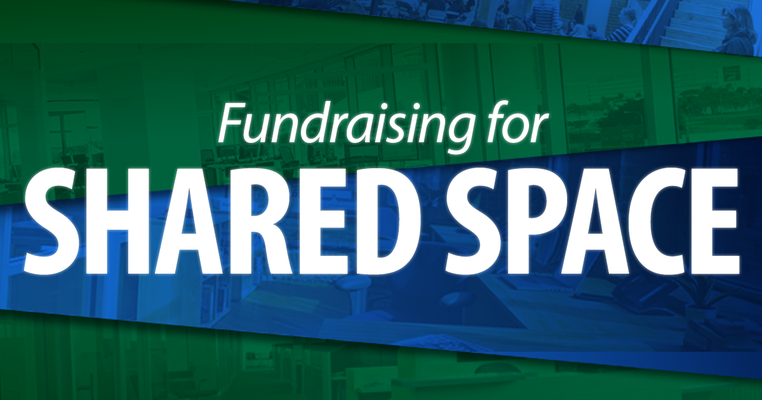Are you fundraising for an infrastructure, or umbrella organization, where your main activities centre around supporting other organizations to do their work?
In a recent webinar for the Non-Profit Centres Network, I talked about some of the issues around raising funds for such organizations, and those that offer shared spaces in particular. These challenges can include:
- They rarely provide direct services. Typically infrastructure organizations provide valuable support to other, community-based or direct service organizations, such as space, resources or training, so that they are more equipped to do their work. Rarely are they working with beneficiaries directly, so demonstrating how you impact the community can be more difficult.
- Cause or business-focused? Most infrastructure organizations rely on selling services, space or membership to charities or non-profits as part of their income generation. Sometimes this can lead to some potential supporters thinking that the organization does, or should, raise all its funding through these sources and therefore fundraising is not necessary. In reality, however, rarely can organizations remain sustainable through these funding sources alone.
- Competing with your members. Particularly for organizations that have an overarching theme under which they deliver support services, like some associations, coalitions or even shared spaces, there is a risk that you end up competing with your members for donor dollars. Not only can this make fundraising more difficult, there is the risk that you upset your membership.
So how can we convince donors of what difference we make to our communities and help them to feel passionate about our work? How do you overcome some of the challenges around competing with your membership? Here are some suggestions!
Really understand your value proposition
There is no doubt that infrastructure organizations provide valuable support to its member organizations, but the key to successful fundraising is in both quantifying, and qualifying, that value. How, as a result of what you are doing, do you help these organizations do their job better? What does it mean if you do? If, for example, your contribution results in reducing costs for each member organization, then how do these savings result in more people, for example, being helped out of poverty, overcome addiction or to receive counselling? How does that the fact that organizations are more efficient through your training result in a better standard of service or care for the end user?
By clearly demonstrating the link between your services and the benefit to the community, you can show potential donors that your work does indeed have an impact and plays a vital role in society.
Capitalize on your unique position
Some of the most successful fundraising that I’ve seen in infrastructure organizations happens when the organization has a clear vision or outcome in mind, an outcome that its members see great value in and one that they would struggle to fulfil if working independently.
Infrastructure organizations are often in a strong position to really strive for a higher level of change. Their oversight of a larger group of organizations, all working from different perspectives to tackle a particular issue, gives them a unique perspective. As a result, there is often the potential to develop a stronger, collective voice that can more effectively advocate for better solutions to a problem common to all your members, potentially leading to a much significant outcome for all your members and those that they support.
In many cases they are also well-placed to facilitate better collaboration between members and other partners. Not only can this help to avoid the risk of organizations working so independently that they end up re-inventing the wheel or duplicating services, but it can also result in cost savings and in finding better solutions to problems that can only come through collaborative efforts (as an aside, funders love to see more collaboration between organizations!)
Demonstrate your impact through a compelling Case for Support
I know, I know, I’ve said this before, but the importance of having a clear Case for Support cannot be emphasised enough! While you may know your benefit to potential donors, the ability to articulate it in a clear and compelling way, a way that helps the donor to visualise how they can make a difference (and therefore be the hero in your fundraising story) is essential.
As you are often a stage removed from “where the magic happens”, collecting stories and statistics can be more difficult, but by working closely with your member organizations, you can identify opportunities where your benefit can be identified and demonstrated. In certain circumstances, you may be able to build monitoring and evaluation of your impact on your members’ efficiency and service delivery into your partnership agreement from the outset.
Have dedicated resources to drive activities
The key to success is in properly resourcing your programming and activities so that you can make them happen, bring together participants, monitor and evaluate progress and determine whether the organization is achieving the outcome you set out to achieve.
In my experience of working with non-profit centres and infrastructure organizations, collaboration, for example, rarely happens without someone, usually a lead organization, driving, organising and facilitating it for it to really work. More importantly, the collaboration has to achieve something that organizations working independently are less likely to achieve.
Have clear fundraising policies in place
One of the ways in which you can move forward with regard to handling the competition conversation is to have a clear policy, that both your members and the infrastructure organization signs up to. Your policy should be tailored to your and your members’ particularly circumstances, but typically they would cover the kinds of fundraising that each organization is permitted to do, funders that organizations are permitted to reach out to and how conflicts of interest will be handled.
What are some of the challenges the additional challenges that you might face when working with an infrastructure organization? How have you worked to overcome them? I’d love to hear about your experiences!

